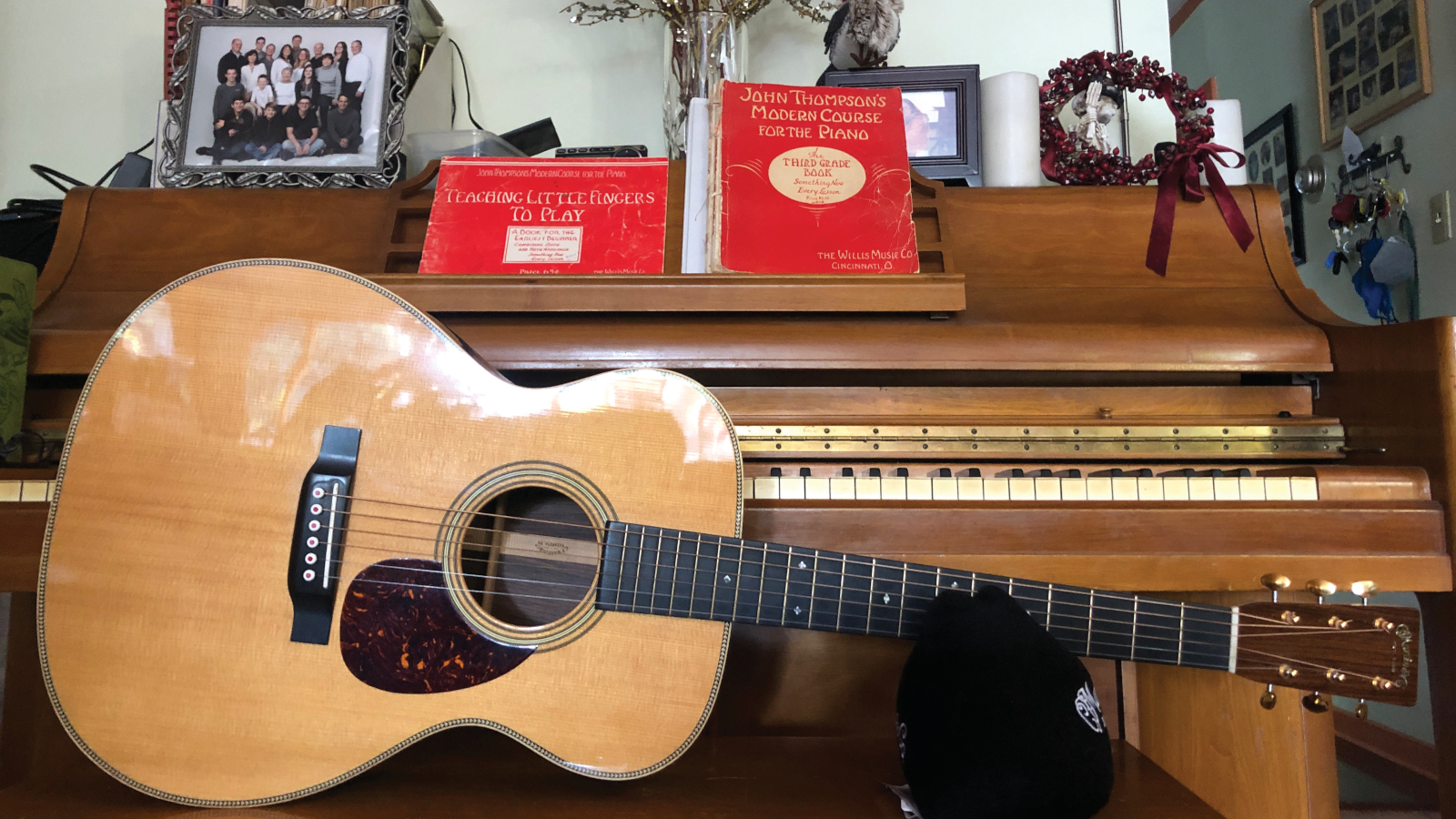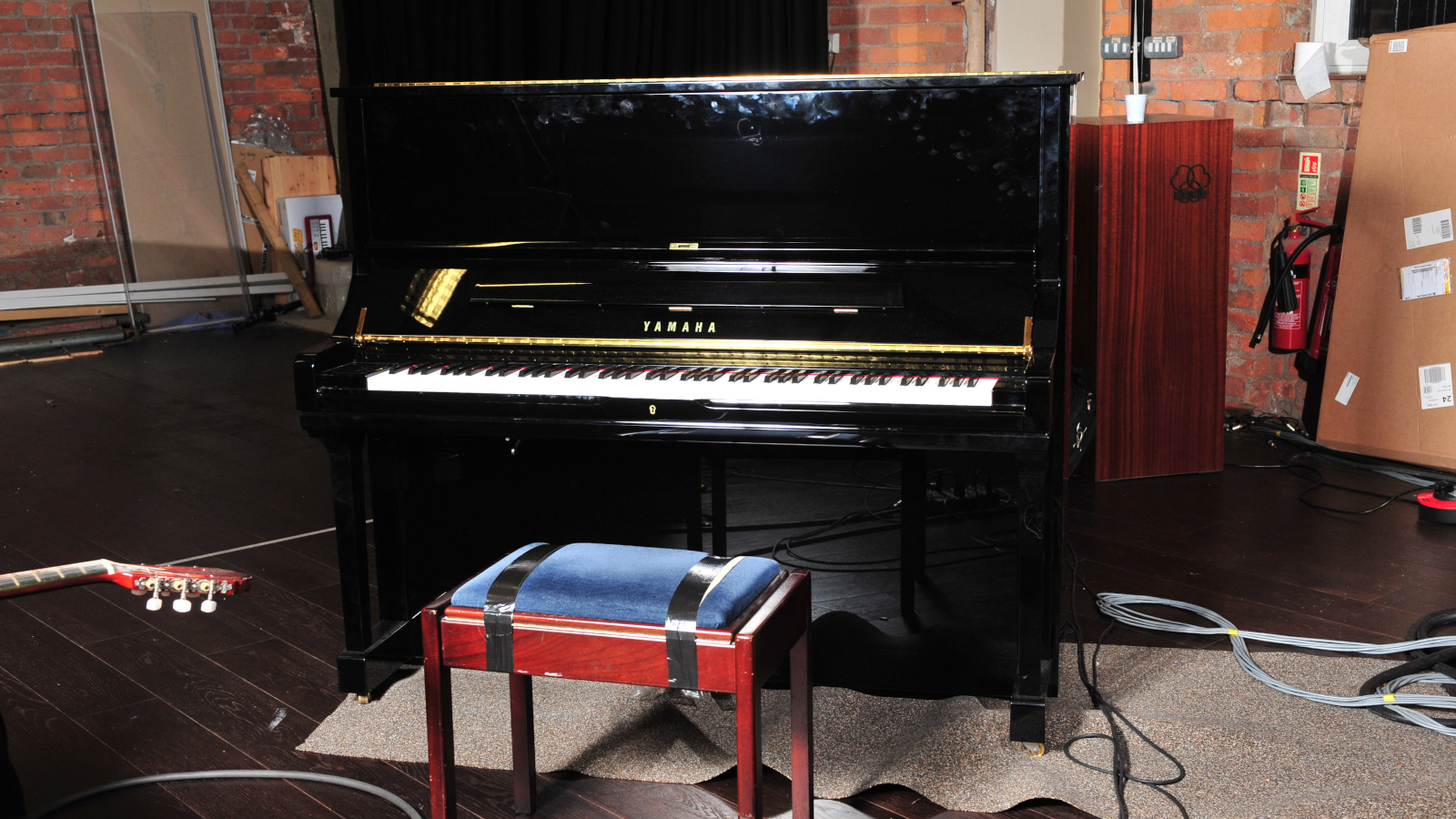Grab Your Acoustic, Sit Down at the Piano, and Advance Your Fretboard Logic
Here’s how to use the fretboard and keyboard for a deeper understanding of both

Every musician should have a basic understanding of the piano keyboard, which can be a fantastic tool for advancing fretboard logic.
I’ve been pretty terrible with this ever since I abandoned the piano to focus on the guitar in my youth, much to my grandmother’s dismay.
When I found myself house sitting this winter in a home that has both a piano and the exact same John Thompson instruction book that was on grandma’s piano all those years ago, I decided it was time to get back to it.
When I started to use the guitar to help my understanding, a number of correlations suddenly appeared, leading me to a renewed appreciation and deeper understanding of both instruments.
Key In
To start, I suggest that you sit in front of a keyboard with guitar in hand to physically induce the correlation and begin the investigation. Any guitar and keyboard will do, but acoustic guitar and piano are advantageous for several reasons.
For one thing, it makes for a glorious analog experience in today’s digital world, and with only wood and wires all around, the correlation is more deeply felt.
For another, focus is paramount, so it’s best to eliminate all distractions from any electric guitar, computer or iOS gear.
All the latest guitar news, interviews, lessons, reviews, deals and more, direct to your inbox!
As you’ll find, splitting concentration between the keys and strings is enough of a challenge.

Tune Up
Tuning up with the piano is a great place to start note recognition and ear training. Back before digital tuners were ubiquitous, this was a routine practice, and I’d forgotten how helpful it could be.
Start with a guitar that’s approximately in tune, pluck the low E string and find the correlating E on the piano by ear.
Home in and tune the string to the key.
When you feel the vibrations of the acoustic guitar and piano coming together, it’s an immersive experience, and your whole body can feel like a tuning fork.
Walk up the piano keys until the next open string and repeat the process for A, D, G, B and E. Take a moment to consider the two-octave span of open-position guitar as it correlates to the piano and notice that it’s not right in the middle but almost completely lower middle.
Only two of the guitar’s open notes lie above middle C.

Transfer Open Guitar Chords to Keys
Start with open E, and notice how it’s built with all 1s and 5s except for the G# in the middle: E B E G# B E.
There’s a solid reason why so many rock songs are based on that foundation. It’s as powerful as a standard-tuned open guitar chord gets.
Now try transferring open G to the keyboard and see how full and happy it sounds with a 1 3 5 1 3 1 configuration: G B D G B G.
Start with open E, and notice how it’s built with all 1s and 5s except for the G# in the middle
Also notice what a stretch it is to get that highest G happening with the pinkie on the keyboard, rather than simply having another 5 on top with a D there the way a piano player might. Move to chords with root notes on the fifth and fourth strings, and realize what the guitar is taking off the table by sacrificing a string or two.
An open A chord transferred to the keys is all power in the left hand – A E A – with only a 3rd, C#, and another 5th, E, for the right hand to play. A piano player would probably top that off with a pinkie playing the octave A. Open C is similar in that regard.
Finally, find open D, which is simply 1 and 5 (D and A) with the left hand on the keys, and 1 and 3, (D and F#) with the right. That’s a distinctively guitar chord that no piano player in his right mind would think makes much sense.
Isn’t it interesting to see how open guitar chords play out across the piano? We’ll dive deeper into keyboard correlations next time.
Jimmy Leslie is the former editor of Gig magazine and has more than 20 years of experience writing stories and coordinating GP Presents events for Guitar Player including the past decade acting as Frets acoustic editor. He’s worked with myriad guitar greats spanning generations and styles including Carlos Santana, Jack White, Samantha Fish, Leo Kottke, Tommy Emmanuel, Kaki King and Julian Lage. Jimmy has a side hustle serving as soundtrack sensei at the cruising lifestyle publication Latitudes and Attitudes. See Leslie’s many Guitar Player- and Frets-related videos on his YouTube channel, dig his Allman Brothers tribute at allmondbrothers.com, and check out his acoustic/electric modern classic rock artistry at at spirithustler.com. Visit the hub of his many adventures at jimmyleslie.com
